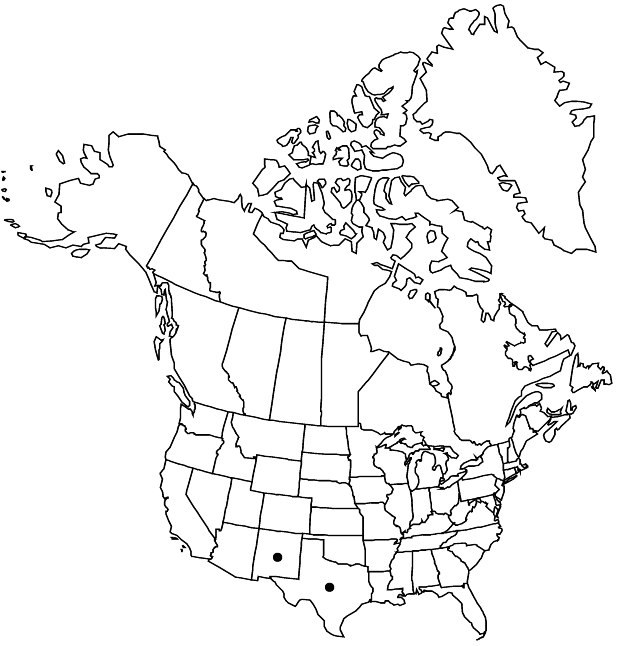Ribes mescalerium
Proc. Biol. Soc. Wash. 13: 196. 1900 ,.
Plants 1–2 m. Stems erect, glandular-pubescent, glabrescent; spines at nodes absent; prickles on internodes absent. Leaves: petiole 1.2–3 cm, crisped-puberulent, long-stipitate-glandular; blade reniform-orbiculate, shallowly 3–5-lobed, cleft 1/8–1/4 to midrib, 1.5–3 cm, base cordate to cuneate, surfaces pubescent, sessile and stipitate-glandular, lobes rounded, margins crenate-dentate, apex rounded. Inflorescences pendent, 6–10-flowered racemes, 3–5 cm, axis stipitate-glandular, flowers evenly spaced. Pedicels jointed, 0.5–1 mm, pubescent stipitate-glandular; bracts obovate, 3–7 mm, long-stipitate-glandular. Flowers: hypanthium greenish white, tubular, tube evenly wide, 3–5 mm, pubescent, stipitate-glandular; sepals not overlapping, spreading, white, ovate-oblong, 0.5–1 mm; petals nearly connivent, erect, white, round to broadly ovate, revolute, 1 mm; nectary disc not prominent; stamens nearly as long as petals; filaments linear, 0.5 mm, glabrous; anthers cream, ovate, 0.2–0.3 mm, apex with conspicuous, cupshaped gland; ovary stipitate-glandular; styles connate 3/4 their lengths, 6 mm, glabrous. Berries palatable, black, globose, 5–8 mm, glandular-pubescent.
Phenology: Flowering May–Aug.
Habitat: Open areas
Elevation: 2100-3500 m
Distribution

N.Mex., Tex., Mexico (Chihuahua)
Discussion
Ribes mescalerium occurs in the Sacramento and Guadalupe mountains of southeastern New Mexico and western Texas. It is distinguished from R. cereum in having thinner, larger, more deeply lobed leaves, and glands with relatively long stalks.
Selected References
None.